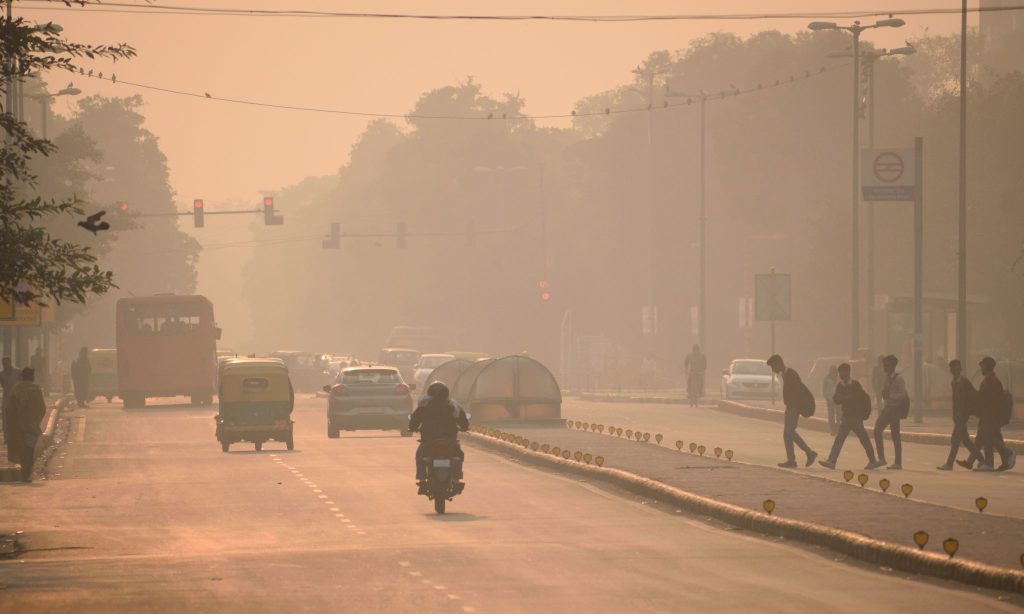
Unless you fall within the vulnerable group of persons with respiratory conditions, not much thought is given to the air we breathe.
The National Environment and Planning Agency (NEPA), however, monitors Jamaica’s ambient air to ensure the quality is safe for all and is expanding its monitoring network.
The air includes more than the oxygen needed to survive. It also has pollutants such as particulate matter and gases such as sulfur and nitrogen dioxide and heavy metals. These pollutants enter the air through emissions, which NEPA monitors.
NEPA’s Air Quality Management Branch through its network of monitoring stations across the island, tests samples of air to determine pollution levels. This is done through both continuous and a six-day cycle monitoring regime of particulate matter.
“One of the ways we manage air quality is through our permit and licence system, and that controls or limits the impact that certain industrial facilities will have on our ambient air. We have also identified areas which have degrading and poor air quality and we intend to implement strategies in those areas in order to improve air quality,” Coordinator in the Air Quality Management Branch at NEPA, Jody-Ann Minott-Marston told JIS News.
These areas include the Spanish Town Road corridor and the Rockfort area. The annual standard for particulate matter of 10 microns (PM10) is 50 micrograms per cubic metre of air. A breach of this standard indicates that there are consistent, high-pollutant levels in the area.
“Those strategies include us first ensuring that there is full compliance by all the licensees within the area. We are also increasing our public awareness about air quality in the area… We are looking towards partnering with other agencies which are in control of other sources which may be outside of the purview of NEPA, in order to support our efforts in improving air quality,” Minott-Marston shared.
The Branch is also expanding its network to include the monitoring of particulate matter of 2.5 microns (PM2.5). These are minute particles suspended in the air that can easily make their way through respiratory tracts and into the bloodstream.
NEPA is also currently undertaking a revision of the Natural Resources Conservation Authority (Ambient Air Quality Standards) Regulations, 1996. The update to the regulation will see the inclusion of a threshold for PM2.5 as well as a revision of limits for air pollutants mentioned in the Regulations.
When the updated Regulations become enforceable, it will further strengthen NEPA’s efforts towards ensuring cleaner ambient air for Jamaica.
NEPA’s Air Quality Management Branch offers advisories on air quality through the air quality index. The index runs from 0 to 500 with increments of 50. For each increment, there is an associated colour code and a description of the air quality, which corresponds with a range of particulate concentration in the air. The higher up the scale, the greater the level of air pollution and the greater the health concerns.
Currently, the air quality index can be found on NEPA’s social media pages @nepajamaica and the agency is working towards making it a more regular feature in its reporting to the public.
The country is now in the period when the region is most often affected by dust plumes from the Saharan Desert. PM2.5 pollutants introduced by this natural phenomenon tend to negatively impact persons with respiratory conditions.
NEPA’s Air Quality Coordinator advised vulnerable persons on how to protect themselves especially during times of high air pollution.
“We implore Jamaicans to find suitable alternatives to burning their waste as this worsens air quality, especially during these periods when we are having Sharan dust episodes, as that can further exacerbate the poor air quality we are having. Also, try as best to limit your exposure to air pollutants,” encouraged Minott-Marston.
– JIS News





